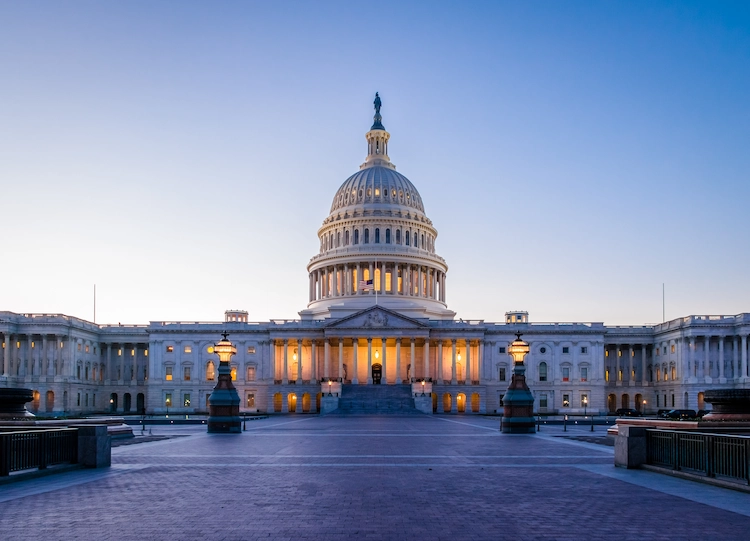Supreme Court Lowers the Bar for Title VII Suits Alleging Discriminatory Transfers

In Muldrow v. City of St. Louis, Missouri, 601 U.S. ____ (2024), the U.S. Supreme Court unanimously held that an employee challenging a job transfer under Title VII of the Civil Rights Act of 1964 must show that the transfer brought about some harm with respect to an identifiable term or condition of employment, but that harm need not be significant.
Facts of the Case
Sergeant Jatonya Clayborn Muldrow maintains that her employer, the St. Louis Police Department, transferred her from one job to another because she is a woman. From 2008 through 2017, Muldrow worked as a plainclothes officer in the Department’s specialized Intelligence Division. In 2017, the new Intelligence Division commander asked to transfer Muldrow out of the unit so he could replace her with a male police officer. Against Muldrow’s wishes, the Department approved the request and reassigned Muldrow to a uniformed job elsewhere in the Department.
While Muldrow’s rank and pay remained the same in the new position, her responsibilities, perks, and schedule did not. After the transfer, Muldrow no longer worked with high-ranking officials on the departmental priorities lodged in the Intelligence Division, but rather supervising the day-to-day activities of neighborhood patrol officers. She also lost access to an unmarked take-home vehicle and had a less regular schedule involving weekend shifts.
Muldrow brought a Title VII suit to challenge the transfer. Under Title VII, it is unlawful for an employer “to fail or refuse to hire or to discharge any individual, or otherwise to discriminate against any individual with respect to his compensation, terms, conditions, or privileges of employment, because of such individual’s race, color, religion, sex, or national origin.”
She alleged that the City, in ousting her from the Intelligence Division, had “discriminate[d] against” her based on sex “with respect to” the “terms [or] conditions” of her employment. The District Court granted the City summary judgment. The Eighth Circuit Court of Appeals affirmed, holding that Muldrow had to—but could not—show that the transfer caused her a “materially significant disadvantage.” Muldrow’s lawsuit could not proceed, the court said, because the transfer “did not result in a diminution to her title, salary, or benefits” and had caused “only minor changes in working conditions.”
Supreme Court’s Decision
The Supreme Court vacated and remanded. “Although an employee must show some harm from a forced transfer to prevail in a Title VII suit, she need not show that the injury satisfies a significance test, Justice Elena Kagan wrote on behalf of the unanimous Court.
“Title VII’s text nowhere establishes that high bar.”
In reaching its decision, the Court found that Title VII requires Muldrow to show that her transfer brought about some “disadvantageous” change in an employment term or condition. However, a transferee does not have to show is that the harm incurred exceeded some heightened bar. As Justice Kagan explained:
What the transferee does not have to show, according to the relevant text, is that the harm incurred was “significant.” Or serious, or substantial, or any similar adjective suggesting that the disadvantage to the employee must exceed a heightened bar. “Discriminate against” means treat worse, here based on sex. But neither that phrase nor any other says anything about how much worse. There is nothing in the provision to distinguish, as the courts below did, between transfers causing significant disadvantages and transfers causing not-so-significant ones. And there is nothing to otherwise establish an elevated threshold of harm. To demand “significance” is to add words—and significant words, as it were—to the statute Congress enacted. It is to impose a new requirement on a Title VII claimant, so that the law as applied demands something more of her than the law as written.
The Supreme Court went on to reject the City’s arguments in favor of adopting a “significance” standard. In doing so, the Court expressed doubt about the City’s prediction that employees will flood courts with litigation in the absence of a significant-injury requirement. According to the justices, courts retain multiple ways to dispose of meritless Title VII claims challenging transfer decisions. “But even supposing the City’s worst predictions come true, that would be the result of the statute Congress drafted,” Justice Kagan noted.
The Court remanded the case for the lower court to apply the proper standard, noting that Muldrow’s allegations, if properly preserved and supported, “meet that test with room to spare.”
Previous Articles
SCOTUS Rules E-Cigarette Retailers Can Challenge FDA Order in Fifth Circuit
by DONALD SCARINCI on September 4, 2025
In FDA v. R. J. Reynolds Vapor Co., 606 U.S. ____ (2025), the U.S. Supreme Court held that e-cigare...
Supreme Court Expands Judicial Review of Agency Actions
by DONALD SCARINCI on
In McLaughlin Chiropractic Associates, Inc. v. McKesson Corp., 606 U.S. ____ (2025), the U.S. Supre...
SCOTUS Lifts Injunction Blocking Trump Administration’s Plans to Reduce Federal Workforce
by DONALD SCARINCI on August 27, 2025
In Trump v. American Federation of Government Employees, 606 U.S. ____ (2025), the U.S. Supreme Cou...
The Amendments
-
Amendment1
- Establishment ClauseFree Exercise Clause
- Freedom of Speech
- Freedoms of Press
- Freedom of Assembly, and Petitition
-
Amendment2
- The Right to Bear Arms
-
Amendment4
- Unreasonable Searches and Seizures
-
Amendment5
- Due Process
- Eminent Domain
- Rights of Criminal Defendants
Preamble to the Bill of Rights
Congress of the United States begun and held at the City of New-York, on Wednesday the fourth of March, one thousand seven hundred and eighty nine.
THE Conventions of a number of the States, having at the time of their adopting the Constitution, expressed a desire, in order to prevent misconstruction or abuse of its powers, that further declaratory and restrictive clauses should be added: And as extending the ground of public confidence in the Government, will best ensure the beneficent ends of its institution.





